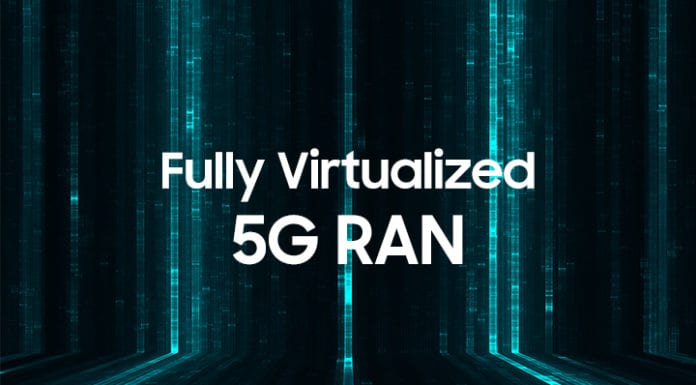Watching the evolution of telco carrier RAN networks feels like viewing a sports replay in slow motion. It’s interesting to see, and there are often angles and perspectives that crop up that aren’t immediately apparent. In the end, however, you still know where things are going to end up.
In the case of radio access networks, there’s little doubt that we’ll eventually end up in a world where RANs will primarily be built with, managed, and evolve by software, while the underlying hardware will take a less prominent role. We saw yet more signs of that at the recent Mobile World Congress in Barcelona, with the inevitability of this software-defined network approach slowly starting to make itself more apparent. What’s interesting, however, is that traditional network equipment vendors are now beginning to play a larger role.
A classic case in point is Samsung Networks. While the company doesn’t have the same degree of legacy hardware concerns that an Ericsson or Nokia may have, it’s clear that Samsung Networks is morphing into more of a software business than a hardware one. Yes, it continues to build radios and some baseband hardware, but the bulk of its developments and arguably most of its innovations are now on the software side. (Ironically, a story that I don’t believe the company tells as well as it could.)
Just before and during the most recent MWC, for example, Samsung Networks unveiled new software-based capabilities, as well as high-profile deployments of its cloud native vRAN and Open RAN solutions with major carriers around the world. Specifically, the company discussed its work on vRAN and Open RAN with Dish in the U.S., Vodafone in Europe, and KDDI in Japan. Interestingly, it also coined the concept of vRAN 3.0. Not only does the numbering imply a software update—and to be clear, there were new enhancements made to its core vRAN software—but the company was also referring to a new, more advanced way of thinking about virtual RAN solutions overall.
The latest software updates from Samsung Networks involve optimizations and refinements to things like power consumption, automation, and throughput speed, all on existing standard x86-based servers. Specifically, the company’s Adaptive Core Allocation and Core Sleep Mode features are designed to be smarter about how power is consumed—a critical point given how power-hungry telco network equipment can be. Similarly, the Energy Saving Feature Orchestrator (ESFO) automates the process of turning individual cells or paths on and off based on analysis of how network traffic patterns are evolving.
On the performance side, the company enabled a new 3-cell configuration that can be used with 64T64R Massive MIMO radios to increase the bandwidth by more than 3x to 200 megahertz, up from 60 megahertz. In addition, there’s now support for both Lookaside and Inline L1 accelerator cards as well as the latest telco-focused Intel 4 th Gen Xeon Scalable CPUs that have integrated vRAN acceleration functions. The key point is that in large scale network deployments, there’s a very real possibility that there could be any combination of servers with different hardware, so it’s important to offer the flexibility to support multiple solutions.
Collectively, these new features nicely exemplify the reasons why the move to a software-defined architecture for telco networks just make sense. They also hint at how the analogous changes in enterprise and cloud computing infrastructures over the last few decades have been so incredibly valuable in improving efficiency, enhancing flexibility, increasing capacity, and decreasing costs. As with the outcome of a replay, we know that’s where telco networks are headed.
Samsung Networks’ vRAN 3.0 concept is also interesting because it reflects the fact that the move to both vRAN and Open RAN aren’t immediate transitions. Instead, they are longer multi-step evolutionary paths. While anyone could argue whether 3.0 is the right demarcation for where we currently stand, what seems indisputable is that we’re past the initial stages but not anywhere near the finish line. In Samsung’s terminology, vRAN 3.0 is a “smarter vRAN with enhanced software capabilities,” a perfectly reasonable definition. More importantly, though, the thinking behind it reflects that the industry is evolving, and it’s not just the software-only Open RAN advocates that are pushing towards a software-defined telco network future.
Practically speaking, it’s the ability to turn on new revenue-generating features like network slicing and other new functions across an entire network—not just in a few test cases—that’s ultimately going to drive carriers to make the long-awaited full transition to vRAN and Open RAN products and architectures. This is where software-defined networks, and companies that focus on enabling them, have the real advantage. As the enterprise computing world learned from the explosion of cloud computing many years ago, only cloud-native, software-based solutions have the speed and flexibility to meet the rapidly evolving needs that the telco industry now faces.
To put it more bluntly, older network architectures have kept the promise of 5G unfulfilled, but new architectures should finally deliver on what is truly possible.
Bob O’Donnell is the president and chief analyst of TECHnalysis Research, LLC a market
research firm that provides strategic consulting and market research services to the technology industry and professional financial community. You can follow him on LinkedIn at Bob O’Donnell or on Twitter @bobodtech.

